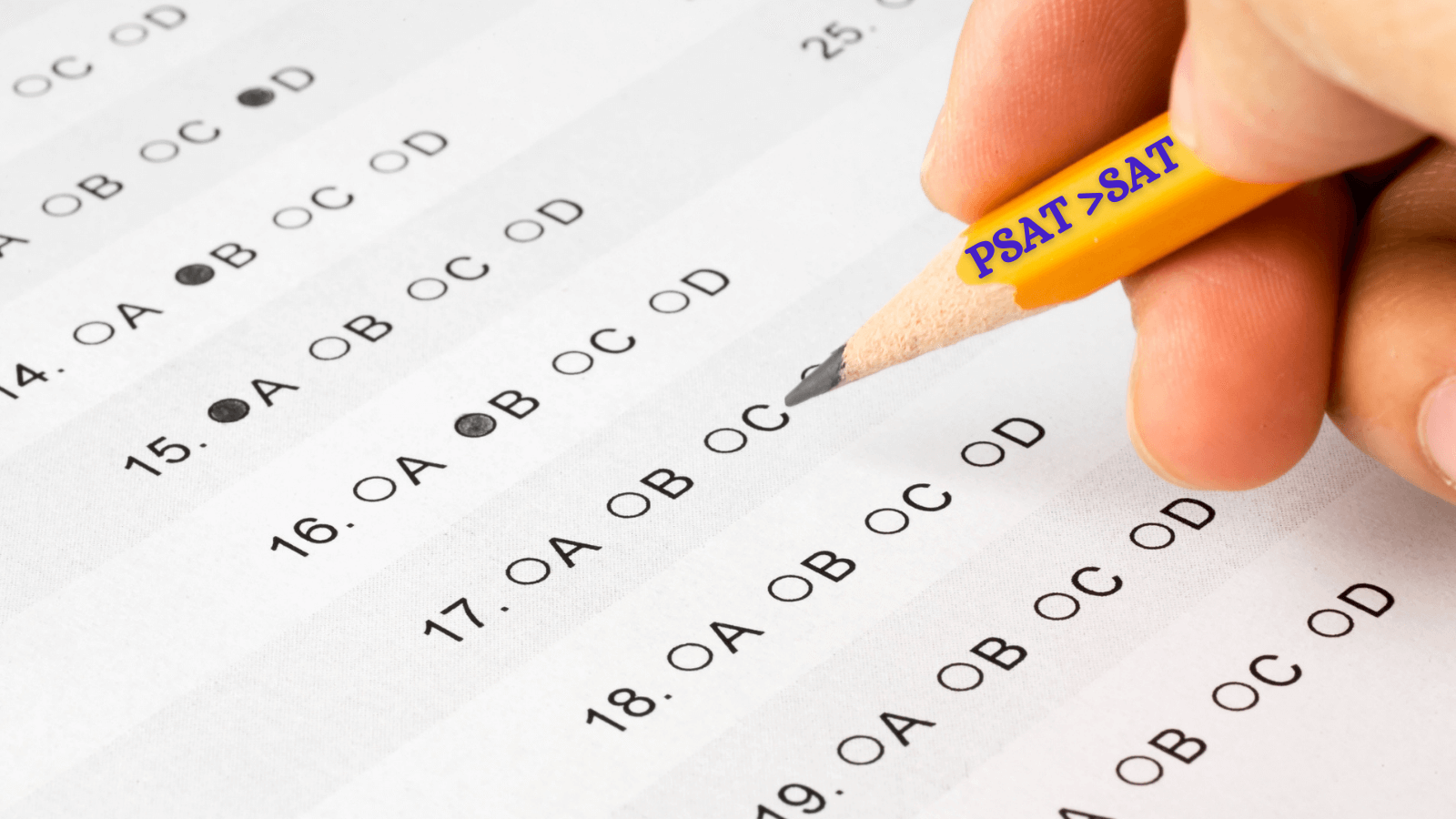Student-centric advice and objective recommendations
Higher education has never been more confusing or expensive. Our goal is to help you navigate the very big decisions related to higher ed with objective information and expert advice. Each piece of content on the site is original, based on extensive research, and reviewed by multiple editors, including a subject matter expert. This ensures that all of our content is up-to-date, useful, accurate, and thorough.
Our reviews and recommendations are based on extensive research, testing, and feedback. We may receive commission from links on our website, but that doesn’t affect our editors’ opinions. Our marketing partners don’t review, approve or endorse our editorial content. It’s accurate to the best of our knowledge when posted. You can find a complete list of our partners here.
Understanding Your AP Scores
 By
Lisa Freedland
By
Lisa Freedland 
Lisa Freedland is a Scholarships360 writer with personal experience in psychological research and content writing. She has written content for an online fact-checking organization and has conducted research at the University of Southern California as well as the University of California, Irvine. Lisa graduated from the University of Southern California in Fall 2021 with a degree in Psychology.
Full BioLearn about our editorial policies

Caitlyn Cole is a college access professional with a decade of experience in non-profit program and project management for college readiness and access organizations.
Full BioLearn about our editorial policies

Maria Geiger is Director of Content at Scholarships360. She is a former online educational technology instructor and adjunct writing instructor. In addition to education reform, Maria’s interests include viewpoint diversity, blended/flipped learning, digital communication, and integrating media/web tools into the curriculum to better facilitate student engagement. Maria earned both a B.A. and an M.A. in English Literature from Monmouth University, an M. Ed. in Education from Monmouth University, and a Virtual Online Teaching Certificate (VOLT) from the University of Pennsylvania.
Full BioLearn about our editorial policies

Every year, millions of students take Advanced Placement (AP) exams. For those who have never taken one before, it can certainly be a struggle to understand your scores. Lucky for you, there’s no need to fear. We’ve gone through and created this article to help you interpret your AP scores, no matter what exam you took or score you received.
So, if that sounds of use to you, keep on reading to learn how exams are scored. We also cover what each AP score means and look at the most recent score distributions (for every exam)!
How are AP exams scored?
Before we get into the actual interpretation of your AP score(s), it might help to know how AP tests are scored first. Let’s get into it.
Once students finish their exams, they are collected by test proctors, and given to the school. One’s school will then return all paper AP exam materials to the AP program. All paper exams are then scored. Here’s how:
- Multiple-choice questions are scored by a computer, which will scan each answer sheet. Students’ multiple choice scores equal the total number of correct responses on their answer sheets.
- Free-response questions are scored at the yearly AP Reading which takes place the first two weeks of June. Specially chosen college professors and AP teachers meet to grade these sections.
- The multiple-choice and free-response scores are combined to form a composite score. These composite scores are then “translated” into the 5-point scale. Statistical processes are used to ensure that each score (a 1, 2, 3, 4, or 5) reflects the same “level of achievement” as previous years. For example, a “3” one year should reflect roughly the same or a similar score as any other year.
And that’s how AP exams are scored (most of them, at least)! However, if you took AP Seminar, AP Research, AP Computer Science Principles, or one of the AP Art and Design exams, the grading works a little differently.
If you’re curious about how any particular exam is scored, we would highly recommend checking out the College Board’s AP courses and exams page.
AP exams with special score structures
We’ve now gone over how most AP exams are scored, but there are a few exams that have “special score structures.” Most notably, these include the AP Music Theory and AP Calculus BC exam. Let’s take a look at how these are scored.
Music Theory
Those who take the AP Music Theory exam should expect to receive two different subscores, both of which are scored on the typical 1-5 scale. The first of these subscores is the aural component subscore, which is based on one’s answers to (1) multiple-choice questions about recorded musical excerpts, (2) melodic dictation questions, (3) harmonic dictation questions, and (4) sight-singing questions. ‘Aural’ refers to the ear or the sense of hearing.
The other subscore is the nonaural component subscore. This score is based on one’s answers for (1) score analysis and multiple-choice questions unrelated to recorded musical excerpts, (2) free-response questions about realization of a figured bass, (3) realization of a chord progression from Roman numerals, and (4) the composition of a bass line to fit a given melody.
If you’re perhaps wondering why these scores are divided in this way, it’s simply to help college music departments make decisions about credit and placement when there are separate courses offered for written music theory and aural skills. To learn more about the AP Music Theory exam (or the course itself), we highly recommend checking out the College Board’s AP music theory page!
Calculus BC
The AP Calculus BC exam is another test scored differently than most AP exams, in that it also gives students a subscore. This subscore, the Calculus AB subscore, is unique in that AP Calculus AB has an AP exam of its own. However, it is included as a subscore on the AP Calculus BC exam because around 60% of the Calculus BC exam is devoted to Calculus AB topics. So, besides receiving their typical 1-5 score for the entire Calculus BC exam, students taking the exam will also receive a 1-5 score for how well they performed on the Calculus AB topics specifically.
To learn more about the AP Calculus BC exam (or the course itself), we highly recommend checking out the College Board’s AP calculus BC page! And, if you’re interested in how Calculus BC differs from AP Calculus AB, consider checking out the College Board’s AP calculus AB page as well.
Interpreting your AP Scores
Now onto the fun part: interpreting your scores! Before we get into what each score means, though, from earlier in this article that AP exams are scored on a 1-5 scale. This means that while the lowest score you can earn is a “1”, the highest is a “5.” And, while any score of 3 or above is considered “passing,” many universities will require scores of 4 or 5 for students to receive college credit for their AP exam scores.
So, with that said, what does each score mean?
Also see: How does AP credit work?
AP score of 1
A score of “1” is the lowest score students can receive on an AP exam, and typically indicates that a student was largely or entirely unfamiliar with a course’s content. While receiving a score of “1” is very rare on some exams, it is quite common on others (you’ll see what we mean when you get to the score distributions later!). However, either way, students will unfortunately be unable to receive college credit with an AP score of 1.
AP score of 2
According to the College Board, students who receive a score of 2 on an AP exam are considered “possibly qualified” to pass a college course focusing on the same subject matter. However, since students who receive a 2 are only deemed “possibly” (and not certainly) qualified to pass a similar college-level course, they are unable to receive college credit with an AP score of 2.
Although students who receive a score of 1 or 2 on an AP exam will not be able to receive college credit for their scores, we want to reassure these students that this is certainly not the end of the world. AP scores are not factored into college admissions, and students often go on to have great college careers even if they weren’t able to “pass” a few of their AP exams.
For now, though, onto the next score!
AP score of 3
An AP score of 3 is the lowest score one can receive in order to “pass” an AP exam. The College Board deems students who receive a 3 on any AP exam “qualified” to pass a college course on the same topic. Despite this, since “passing” is often equated with a grade of a B- or C, more competitive schools may not give students credit for an AP score of 3. A 3, however, is the most common score achieved for the majority of AP exams.
AP score of 4
Receiving a score of “4” on an AP exam indicates that a student has a strong grasp of the course material and is able to use that understanding to effectively answer questions about the topic. It is often equated with receiving a grade of “B” and suggests that students would have no issue passing a college course testing the same material. The vast majority of colleges, besides those that are deemed the “most selective,” will typically give students college credit for an AP score of 4.
AP score of 5
And last, but certainly not least, is an AP score of 5! A score of 5 suggests that a student has studied hard and has a very solid understanding of the subject matter. All colleges, except those few that don’t allow students to receive college credit for their AP scores, will generally give students credit for an AP score of 5.
2023 AP Score Distributions
You now know how to interpret your AP scores, but how do your scores stack up compared to your peers? Well, that’s what the score distributions are for! Every year, the College Board releases score distributions for each AP exam, giving students an idea of how many students got a score of 1, 2, 3, 4, and 5 on each exam. While this isn’t essential information to know you, you may be curious to review the distributions to learn more about which AP exams are more or less challenging to help you prepare. So, keep on reading to see how students performed on each AP exam for the 2020-2021 school year.
Before we get into the distributions, though, we would like to note that these numbers have been “released” (tweeted) by the College Board’s head of Advanced Placement, Trevor Packer, himself. Despite this, they are only preliminary breakdowns and may slightly differ from the official 2021 distributions that will eventually be posted by the College Board. This is because the official distributions take into account the scores from late or make-up exams, while the preliminary score distributions do not.
For now, here we go!
Arts
| Exam | 5 | 4 | 3 | 2 | 1 |
| 2-D Art and Design | 11.5% | 31.5% | 40.7% | 14.4% | 2% |
| 3-D Art and Design | 7.1% | 25.2% | 39.9% | 23.5% | 4.4% |
| Art History | 13.8% | 23.8% | 27% | 23.8% | 11.6% |
| Music Theory | 19.8% | 16.9% | 24% | 24.1% | 15.2% |
| Drawing | 15.7% | 32.9% | 36.1% | 13.1% | 2.1% |
English
| Exam | 5 | 4 | 3 | 2 | 1 |
| English Language and Composition | 10.3% | 19.7% | 26.1% | 29.5% | 14.4% |
| English Literature and Composition | 14.9% | 27.8% | 34.5% | 14.4% | 8.4% |
History and Social Sciences
| Exam | 5 | 4 | 3 | 2 | 1 |
| Comparative Government and Politics | 16.4% | 23.2% | 31.2% | 16.2% | 13% |
| European History | 12.9% | 21.3% | 25.2% | 29% | 11.6% |
| Human Geography | 16% | 20% | 18.4% | 14% | 31.6% |
| Macroeconomics | 17.1% | 22.9% | 24.7% | 21.6% | 13.7% |
| Microeconomics | 21.3% | 26% | 20.6% | 19.9% | 12.1% |
| Psychology | 16.9% | 23.2% | 19.5% | 12.4% | 28% |
| United States Government and Politics | 12.8% | 11.3% | 25.1% | 24% | 26.8% |
| United States History | 10.6% | 14.8% | 22.1% | 22.7% | 29.8% |
| World History | 15.3% | 21.9% | 27.4% | 22.3% | 13% |
Math and Computer Science
| Exam | 5 | 4 | 3 | 2 | 1 |
| Calculus AB | 22.4% | 16.2% | 19.4% | 21.7% | 20.3% |
| Calculus BC | 43.5% | 15.9% | 19% | 15.2% | 6.3% |
| Computer Science A | 26.8% | 22.4% | 18.8% | 9.5% | 22.5% |
| Computer Science Principles | 11.5% | 20.6% | 31.1% | 20.5% | 16.4% |
| Statistics | 15.1% | 22.2% | 22.7% | 16.2% | 23.8% |
Sciences
| Exam | 5 | 4 | 3 | 2 | 1 |
| Biology | 14.3% | 23% | 27.2% | 23.6% | 12% |
| Chemistry | 16% | 27.1% | 32% | 16.9% | 8% |
| Environmental Science | 8.3% | 28.4% | 17% | 26.4% | 19.9% |
| Physics 1: Algebra-Based | 8.8% | 18.3% | 18.5% | 28% | 26.4% |
| Physics 2: Algebra-Based | 16.5% | 18.5% | 34.9% | 23.8% | 6.4% |
| Physics C: Electricity and Magnetism | 33.6% | 23.5% | 13.1% | 17.9% | 11.9% |
| Physics C: Mechanics | 26.4% | 26.3% | 20.7% | 14% | 12.5% |
World Languages and Cultures
| Exam | 5 | 4 | 3 | 2 | 1 |
| Chinese Language and Culture | 54.2% | 18.8% | 15.4% | 5% | 6.6% |
| French Language and Culture | 13.2% | 25.1% | 36.4% | 19.8% | 5.5% |
| German Language and Culture | 21.8% | 21.3% | 24.9% | 19.2% | 12.8% |
| Italian Language and Culture | 23.2% | 22.8% | 26.9% | 17.1% | 10.1% |
| Japanese Language and Culture | 50.8% | 8.6% | 17.5% | 8.2% | 14.9% |
| Spanish Language and Culture | 24.3% | 30% | 29.6% | 13.5% | 2.7% |
| Spanish Literature and Culture | 8.5% | 23.3% | 35.6% | 22.5% | 10.1% |
| Latin | 12.3% | 16.5% | 28% | 24.9% | 18.4% |
Capstone Diploma Program
| Exam | 5 | 4 | 3 | 2 | 1 |
| Research | 13.3% | 26.4% | 44.7% | 12.5% | 3.1% |
| Seminar | 11.4% | 19.7% | 53.9% | 11.2% | 3.8% |
Do AP scores impact college admissions?
We hope that the 2023 score distributions were able to give you a good idea of how you performed against your peers. If you’ve taken the test(s) and did particularly well, congratulations! If you didn’t perform exactly how you wished, however, there’s no need to worry!
Ultimately, students can choose whether or not to send in their AP scores to colleges they apply to. So, for students who did perform well, it may be beneficial to send your scores off to colleges and give your application that extra little “bump” (and possibly get you some college credit if you’re accepted). However, if you didn’t perform up to your expectations, you don’t need to send your scores in at all – and they will not be seen by college admission panels.
While your AP scores certainly won’t be a defining factor in whether or not you’re accepted to colleges, you can definitely reap the benefits of performing well on them (they look good on your application plus are a potential to earn college credit!). Thus, we highly recommend students study hard and try their best on their AP exams.
So, if you’re not exactly sure how to practice for your AP exams or need some advice on how to do so, we highly recommend checking out the College Board’s Practice for the exams page.
Additional resources for AP exams
If you’ve recently taken AP exams, you might have questions about how your scores will impact your future. We’ve got a guide to help you understand how AP credit works, so you can get an idea of what to expect for college. If you have more time left in high school, we can show you how to self-study for your next AP exam, and show you the easiest exams to self-study for.
If you’re considering finding a new way to earn college credit, we can also walk you through the steps of dual enrollment. Finally, for students who are wondering whether their AP-boosted GPA will take precedence over their standard GPA, check out our guide to weighted vs unweighted GPAs. Best of luck, and now that AP tests are behind you, make sure you apply for all the scholarships you are eligible for!
Frequently asked questions about AP scores
Do colleges prefer AP or honors?
To learn more about the differences (and similarities) between AP and honors, be sure to check out Honors vs. AP courses: What are the differences? And, if you’re interested in learning about the differences between the Advanced Placement and International Baccalaureate programs, consider checking out IB vs AP: What you need to know!
Can I use AP scores for college credit?
What is a good AP score?
What happens if you fail an AP exam?
Can you take an AP Exam without taking the class?
Do you have to take an AP Exam if you take an AP course?




 SAT" printed on his pencil">
SAT" printed on his pencil">
